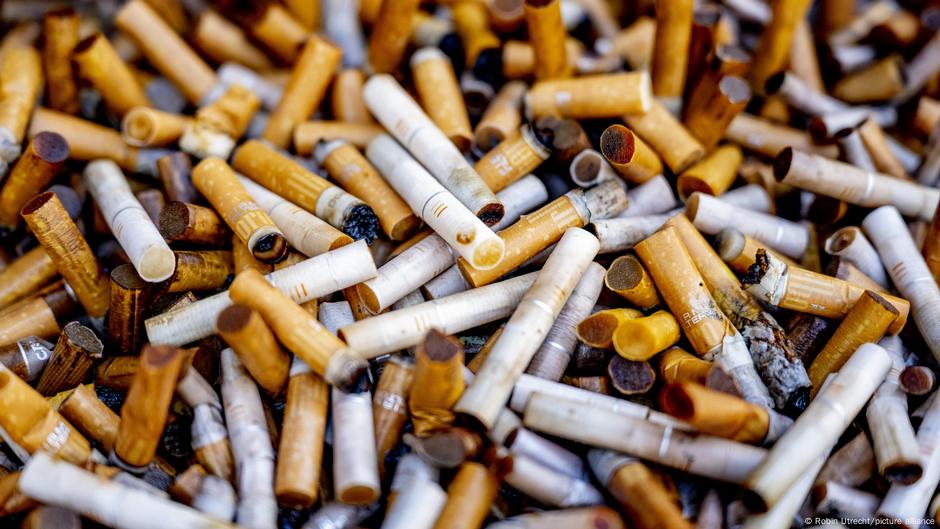Tobacco consumption in Southeast Asia has declined dramatically over the past two decades, at least in per capita terms. according to a new report from the World Health Organization (WHO).
Between 2000 and 2020, smoking prevalence in the region fell from 54% to 23%, an achievement that demonstrates “strong political commitment, comprehensive policies and community engagement,” Catharina Boehme, WHO’s official in charge of Southeast Asia, said in a statement earlier this month.
Experts say the decline shows the success of long-term public health initiatives.
Most Southeast Asian countries have strengthened their policies on taxes, packaging, advertising bans and restrictions on public smoking, said Yvette Van Der Eijk, an assistant professor at the National University of Singapore’s Saw Swee Hock School of Public Health.
“These measures have made tobacco products less accessible and less socially acceptable,” he told DW.
However, while the WHO has praised the region’s progress as a major public health success, some researchers have questioned the logic behind its definition of the Southeast Asian region.
The organization includes India within its Southeast Asia category, while placing Indonesia, the region’s largest country, in the Western Pacific region. Most other international bodies classify India as South Asia and Indonesia as part of Southeast Asia.
This inconsistency makes it difficult to compare WHO figures with other data sets. TO Lancet A study published in June found that smoking rates decreased significantly in most Southeast Asian countries between 1990 and 2021, but the absolute number of smokers increased by around 63%.
This is largely due to population growth, from approximately 440 million people in 1990 to more than 700 million today.
Tougher laws, higher taxes
Despite these statistical caveats, experts say the region has made undeniable progress. Singapore was one of the first countries in the world to ban tobacco advertising and smoking in public places in the 1970s.
Thailand became the first country in Asia, and the first low- or middle-income nation globally, to adopt plain packaging for tobacco products in 2018.
The introduction of large health warnings on cigarette packages, the creation of smoke-free environments in most public places and the complete ban on almost all forms of direct and indirect advertising have played an important role in reducing consumption, Nuntavarn Vichit-Vadakan, founding dean of the Faculty of Public Health at Thammasat University in Thailand, told DW.
Southeast Asian countries have also followed best practice measures set out in the WHO Framework Convention on Tobacco Control (FCTC).
Across the region, governments have increased excise taxes to discourage smokers. In the Philippines, the average price of a pack of 20 cigarettes rose 263% between 2009 and 2021 due to additional taxes, according to government data.
Economic cost of smoking
The policy of anti-smoking legislation makes financial sense for most governments. Smoking-related diseases are estimated to cost Southeast Asian economies between 1% and 2% of GDP each year in lost productivity and healthcare expenses, a major concern for a region that must maintain high growth rates to sustain development.
In Malaysia, for example, tobacco-related health care and productivity losses account for approximately 1.7% of GDP, while tobacco tax revenues contribute less than 0.9%.
Indonesia rules out planned increase in tobacco tax
A notable exception is Indonesia, where an estimated 72% of men use tobacco, one of the highest rates in the world. The country remains the only one in Southeast Asia that has not ratified the WHO FCTC framework.
According to official estimates, the costs related to smoking amount to about 25 billion dollars (21.4 billion euros) per year, or 2.6% of GDP.
The Global Tobacco Industry Interference Index ranks Indonesia as the third worst country globally in terms of tobacco industry influence over government policies. Most other Southeast Asian states fall in the middle of the index.
Earlier this month, Indonesia’s new finance minister, Purbaya Yudhi Sadewa, announced he would scrap a planned increase in tobacco excise taxes for next year.
He argued that annual tax increases since 2014 have simply pushed most smokers toward illegal cigarettes, which he intends to crack down on.
Critics noted that his decision came just hours after a meeting with the Indonesian Cigarette Manufacturers Association, which has aggressively lobbied against further tax increases.
vaping dilemma
Meanwhile, Southeast Asia also faces a new challenge: the rapid rise of e-cigarettes.
Brunei, Cambodia, Laos, Singapore and Thailand have banned vaping entirely, while Vietnam this year banned the sale and possession of e-cigarettes.
The WHO has warned that vaping is becoming increasingly popular among adolescents aged 13 to 15, with around 7.2% using e-cigarettes worldwide.
Data on vaping in Southeast Asia remains limited, but researchers are increasingly concerned about “dual use,” when smokers start vaping but continue smoking cigarettes.
Furthermore, vaping bans are primarily intended to prevent vaping among youth, as youth are the main target of the vaping industry, Van Der Eijk said. “The goal is to prevent the creation of a new generation of nicotine users while current smokers continue to receive support through proven smoking cessation programs,” he added.
Other Southeast Asian states, however, remain hesitant to crack down on vaping. In Malaysia, efforts to ban e-cigarettes have repeatedly met with political resistance.
An attempt to ban vaping products was abandoned in 2015 after politicians argued that doing so would harm Malay Muslim small business owners.
The vaping industry is now estimated to be worth around $830 million in Malaysia, with around 10,000 retailers nationwide. Most of them are owned by members of the Malay-Muslim community, the same group that is increasingly shifting its political support away from the ruling coalition.
As Prime Minister Anwar Ibrahim’s government struggles to keep Malay-Muslim voters in its camp, analysts say the tobacco industry is exploiting political sensitivities to block stricter regulation.
Edited by: Srinivas Mazumdaru



